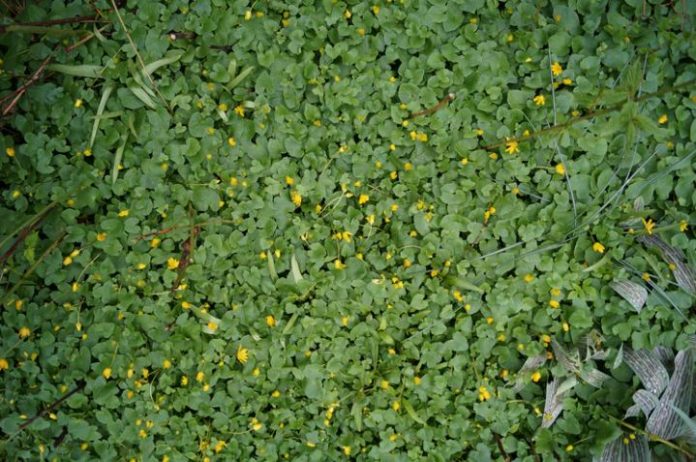No matter what style of garden you have it can be enhanced – and your work made easier, by the inclusion of groundcovers.
So, what makes a good groundcover? True groundcovers have a thick, spreading habit of growth that chokes out weeds or other plants.
They can be used in a myriad of situations; to cover a dry embankment, to fill up the gaps in a brick or stone path, or to add coolness and beauty to a low wall.
In the flower garden, they can be used to restrict weed growth and some are suitable to grow in marshy areas.
Many plants that have a mounding or clumping habit can be used as groundcovers if planted closely enough together that they overlap.
Some low-growing trees and shrubs can be considered good groundcovers, since nothing will grow beneath the weeping branches.
The evergreen spindle tree Euonymous fortunei Emerald n Gold is good to use as a groundcover.
It likes most soils and its bright green and gold variegated foliage changes to a bronzy-pink in winter. It will grow in zones 5-7.
The dwarf broom Genista Lydia makes a good cover for an open bank in full sun, with its prostrate branches and yellow flowers.
Some of the cotoneasters can be used as groundcovers, too. Cotoneaster horizontalis will cover a lot of ground in time. It has pink flowers followed by red berries.
Given an acid soil, heathers make ideal groundcovers once they are well established. They will cover the soil underneath with a dense carpet of foliage, making it impossible for weeds to grow.
Not only do they flower in the winter when the garden is often short on flowers, but the foliage changes color throughout the year.
The evergreen Pachysandra terminalis is as easy to grow as the ivies, but is slightly taller and much less invasive.
It likes a shady spot to settle in, as does the bog plant Lysinnachia nummalaria, or creeping jenny as it is commonly called. Its tiny leaves are covered with yellow flowers in the summer.
One of the best marsh plants with its delightful ferny foliage and spikes of rose colored flowers in mid-summer to fall is Astilbe chinensis Pumila.
Lysichiton americanus will also spread rapidly over marshy areas. Its flowers resemble a yellow arum lily on a short spike, while the broad leaves are a lime green.
Dont forget some ordinary flowers can be used as groundcovers. Nasturtiums tolerate poor soil, flower all summer and rarely allow a weed to take up residence under their rambling stems.
Vinca is a natural groundcover with blue flowers, as is Ajuga reptans or bugleweed. Tiarella cordifolia, or foam flower, spreads by underground rhizomes. Its solid green mat is flecked with red and it has white flowers in spring.
Some groundcovers can become a hazard to the health of other plants if left to grow unchecked, but the odd few hours spent pruning or uprooting unwanted stems will solve the problem and is much easier than weeding.

